Marshall’s Major IV closed headphones impress with their battery performance giving 80 hours of playtime along with wireless charging. Soft pads ensure a more comfortable fit, even after hours of use. The sound, on the other hand, remains unchanged. Its accentuated, yet well-measured bass gives both mids and highs enough room to breathe, although it slightly cuts off the latter in the uppermost nuances, which also slightly impairs its transparency. But in interaction with a Smartphone, both their sound and operation via multifunctional control button in Bluetooth mode are impressive. It’s a pity that Marshall doesn’t provide a carrying case, but with their practical folding mechanism, these compact headphones will fit in a large jacket pocket.
Marshall’s popular Major on-ear Bluetooth headphones triumph in their fourth generation with 80 hours of playtime, wireless charging and improved ergonomic design.

Once the model name Major stood for Marshall’s legendary guitar amplifier from 1967, but its headphone counterpart has successfully followed in its footsteps since its market launch in 2011, recently enjoying a technical makeover in its fourth generation. The headphones remain true to their original black design with closed ear cups made of textured vinyl, whose rectangular shape and signature lettering are reminiscent of a Marshall amp. The very softly padded ear cups hang in metal clamps articulated around the x-axis and are clamped in a retractable folding clip to form a step-less and non-locking extender. The extremely flexible bracket is made of two layers and completely encased in padded imitation leather.
The right-hand ear cup is at the heart of the Major IV. After all, it takes care of charging the battery via the included cable connected to the USB-C socket or by placing the ear cup on a wireless charging surface (Qi). For this purpose, the cup has an eye-catching gold multi-directional control button that can not only be pressed but also tilted in all directions. An LED visualises the charging status in three levels as well as Bluetooth readiness and searches for a compatible Smartphone. For wired operation, the audio cable, which is also part of the package, is connected to the jack socket.
Wearing comfort and functionality
Their 165-gram weight and compact size recommend them as a handy tool for use on the go. The very flexible headband fits not only very small but also large heads without being obtrusive when stretched, thanks to the well-padded headband. To ensure that the ear cups adapt to the ear and do not press uncomfortably even after several hours Marshall makes the exchangeable ear pads even softer. Although the Major IV has no locking extensions, it holds its position confidently even with strong head movements. In addition, it is also very articulated, which makes for an optimal alignment with your ears.
One of the new features is the two folding clips that secure the cups for transport and fold them into the bracket to save space. In contrast to the conventional swivel joints of other headphones, these clips remain rigid up to a certain angle and only tilt when resistance is overcome. Thus, the folding clips only work for transport handling and not for the articulation of the ear cups for position adjustment.
The specs
Marshall has kept its hands off the sound-relevant parameters in the new edition, in order to once again guarantee their sound which has been dubbed legendary. Accordingly, the 40-millimetre dynamic drivers reproduce a frequency range of 20 to 20,000 Hertz. The driver sensitivity is 93.01 decibels and the averaged impedance is a low 50.2 ohms.
The sound
Marshall’s Major IV claim to deliver a sound with booming bass, smooth mids and brilliant highs. I agree with the manufacturer about the bass and midrange, as the low frequencies in particular lay out a bed of precisely mapped transients on which both mids and highs audibly feel at home. With songs like Moderat’s “Let In The Light” or Massive Attack’s “Teardrop”, they skilfully play out the bass notes. Without consulting another pair of headphones for a more objective assessment, the sound is pleasing. Only a direct A/B comparison in wired mode with more neutral-sounding headphones, such as the Sennheiser HD 25, reveals small deficits in the treble range. For sibilant vocals and hi-hats, they lack a certain icing on the cake. I also found their stereo width narrower and their volume somewhat lower. The rather small closed ear cups sit exactly on the ears, so that the drivers inject the signal directly. Noise from the surroundings is nevertheless easily perceived.
Bluetooth operation
On Bluetooth, the Major IV really come into their own. 80 hours of playtime is truly record-breaking, plus their wireless charging is convenient. The sound image polishes up some MP3s, be it from the lack of bass or over-exaggerated treble. The headphones also act as a remote, the multifunctional button controls the music while skipping as well as the volume. But phone calls can also be answered and made via the integrated microphone. By the way, if you want to share your music, you can loop in a second pair of Marshall Majors via a connected cable.
Technical specifications
- Ear couplingOn-ear
- Typeclosed
- Transducer principledynamic
- Frequency response (headphones)20 - 20.000 Hz
- Impedance50,2 ohms
- Sound pressure level (SPL)93,01 dB
- Pressure averaged from big and small head418 g
- Weight with cable192 g
- Weight without cable169 g
- Cable length125 cm
What's in the box
- 3.5 mm jack cable
- USB-C charging cable
Special features
- BT codecs: SBC
- BT version: 5.0









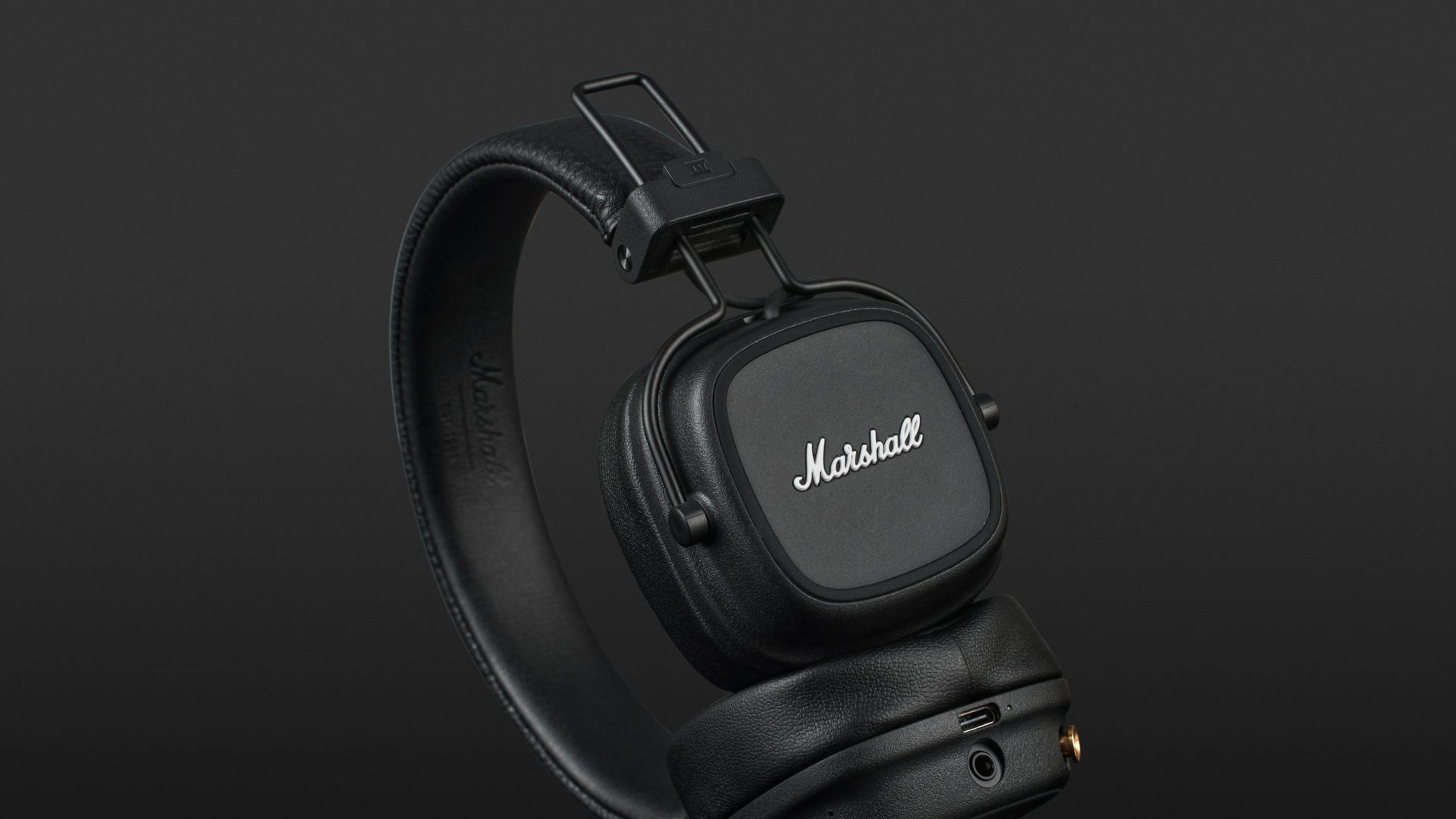
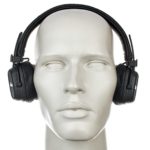
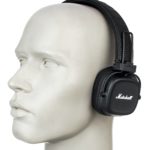
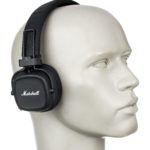
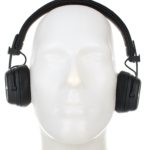

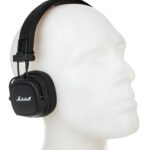





































You review is wrong, these headphones don’t support the BT codec AAC.
Thanks for your comment! ?
To Andrew Gratton, where in the review it says they support the aac codec?
In addition to SBC we had AAC in the specs box.
Great review good wording and extremely well explained! I’m currently listening to Eton Rifles by The Jam, lows,mids & highs are bang on. Overall my.4.75/5 rating for a £140.pair of headphones are a steal for quality ?
I really do love these but why why why no aptx or aac like come on it’s kinda sad to go to these from my LDAC buds
Good review, but why is a KU100 used to measure these? It isn’t anatomically correct in regards to acoustic impedance, and the pinna is likely not correct in regards to stiffness, nor is anything else in this recording mic compliant to industry standards for headphone measurements.
It should be said that on every press of control button (skip forward, skip backwards, pause/play), the headphones play a short confirmation sound/riff. It gets annoying very quickly.